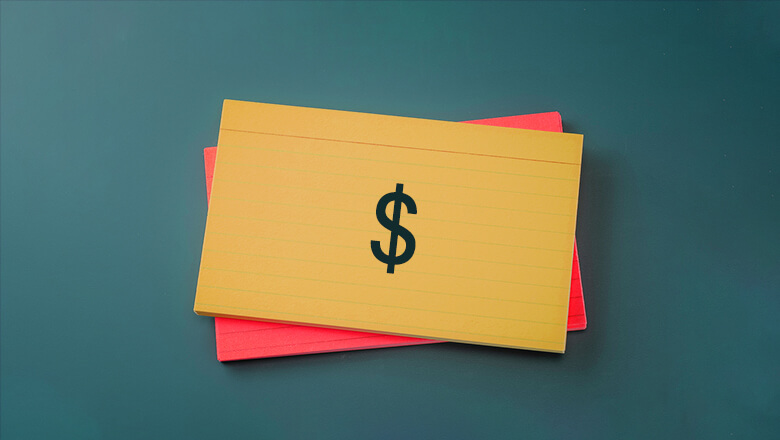Wash Trading: What Is It and How Does It Work?
Wash trading is a practice which involves entering into securities transactions for the express purpose of giving the appearance that a trade has taken place although their portfolio has not substantially changed. Also referred to as round-trip trading, wash trading is a prohibited activity under the Commodity Exchange Act (CEA) and the Securities Exchange Act of 1934.
In some cases, wash trading is a direct attempt at market manipulation. In others, wash trading may result from a lack of investor knowledge. This may be the case with wash sales, in which an investor sells one financial instrument then replaces it with a similar one right away. It’s important to understand the implications of making a wash trade and what one looks like in action.
Key Points
• Wash trading involves investors engaging in the simultaneous buying and selling of securities to create the illusion of trading activity.
• Wash trading involves the simultaneous buying and selling of the same or similar securities.
• This practice can be a form of market manipulation or result from a lack of investor knowledge.
• The goal of wash trading is to influence pricing or trading activity, often through collaboration between investors and brokers.
• Wash trading is illegal and can result in penalties, including the disallowance of tax deductions for losses.
What Is Wash Trading?
Wash trading occurs when an investor buys and sells the same or a similar security investment at the same time. The Internal Revenue Service (IRS) also refers to this as a wash sale, since buying the same security cancels out the sale of that security. It’s also called round-trip trading, since you’re essentially ending where you began — with shares of the same security in your portfolio.
Wash trades can be used as a form of market manipulation. Investors can buy and sell the same securities in an attempt to influence pricing or trading activity. The goal may be to spur buying activity to send prices up or encourage selling to drive prices down.
Investors and brokers might work together to influence trading volume, usually for the financial benefit of both sides. The broker, for example, may benefit from collecting commissions from other investors who want to purchase a stock being targeted for wash trading. The investor, on the other hand, may realize gains from the sale of securities through price manipulation.
Wash trading can be a subset of insider trading, which requires the parties involved to have some special knowledge about a security that the general public doesn’t. If an investor or broker possesses insider knowledge they can use it to complete wash trades.
How Does Wash Trading Work?
On the surface level, a wash trade means an investor is buying and selling shares of the same security at the same time. But the definition of wash trades goes one step further and takes the investor’s intent (and that of the broker they may be working with) into account. There are generally two conditions that must be met for a wash trade to exist:
• Intent. The intent of the parties involved in a wash trade (i.e. the broker or the investor) must be that at least one individual involved in the transaction must have entered into it specifically for that purpose.
• Result. The result of the transaction must be a wash trade, meaning the investors bought and sold the same asset was bought and sold at the same time or within a relatively short time span for accounts with the same or common beneficial ownership.
Beneficial ownership means accounts that are owned by the same individual or entity. Trades made between accounts with common beneficial ownership may draw the eye of financial regulators, as they can suggest wash trading activity is at work.
A telling indicator of wash trading activity is the level of risk conveyed to the investor. If a trade doesn’t change their overall market position in the security or expose them to any type of market risk, then it could be considered a wash.
Wash trades don’t necessarily have to involve actual trades, however. They can also happen if investors and traders appear to make a trade on paper without any assets changing hands.
💡 Quick Tip: How to manage potential risk factors in a self-directed investment account? Doing your research and employing strategies like dollar-cost averaging and diversification may help mitigate financial risk when trading stocks.
Example of a Wash Trade
Here’s a simple wash trade example:
Say an investor who’s actively involved in day trading owns 100 shares of ABC stock and sells those shares at a $5,000 loss on September 1. On September 5, they purchase 100 shares of the same stock, then resell them for a $10,000 gain. This could be considered a wash trade if the investor engaged in the trading activity with the intent to manipulate the market or to unfairly claim a tax deduction for the loss.
Is Wash Trading Illegal?
Yes. The Commodity Exchange Act prohibits wash trading. Prior to the passage of the Act, traders commonly used wash trading to manipulate markets and stock prices. The Commodity Futures Trade Commission (CFTC) also enforces regulations regarding wash trading, including guidelines that bar brokers from profiting from wash trade activity.
The IRS has rules of its own regarding wash trades. The rules disallow investors from deducting capital losses on their taxes from sales or trades of stocks or other securities that are the result of a wash sale. Under the IRS rules, a wash sale occurs when you sell or trade stocks at a loss and within 30 days before or after the sale you:
• Purchase substantially identical stock or securities
• Acquire substantially identical stock or securities in a fully taxable trade
• Acquire a contract or option to buy substantially identical stock or securities, or
• Acquire substantially identical stock for your individual retirement arrangement (IRA) or Roth IRA
Wash sale rules also apply if you sell stock and your spouse or a corporation you control buys substantially identical stock. When a wash sale occurs, you’re no longer able to claim a tax deduction for those losses.
So, in short, yes, wash trading is illegal.
Difference Between Wash Trading & Market Making
Market making and wash trading are not the same thing. A market maker is a firm or individual that buys or sells securities at publicly quoted prices on-demand, and a market maker provides liquidity and facilitates trades between buyers and sellers. For example, if you’re trading through an online broker you’re using a market maker to complete the sale or purchase of securities.
Recommended: What Is a Brokerage Account?
Market making is not market manipulation. A market maker is, effectively, a middleman between investors and the markets. While they do profit from their role by maintaining spreads on the stocks they cover, this is secondary to fulfilling their purpose of keeping shares and capital moving. Without market makers, trades would take longer to execute and the markets could become sluggish.
How to Detect & Avoid Wash Trading
The simplest way to avoid wash trading as an investor is to be aware of what constitutes a wash trade or sale. Again, this can mean the intent to manipulate the markets by placing similar trades within a short time frame, or it can mean inadvertently executing a wash sale because you’re not familiar with the rules.
In the latter case, you can avoid wash trading or wash sales by being mindful of the securities you’re buying and selling and the time frame in which those transactions are completed. So selling XYZ stock at a loss, then buying it again 10 days later to sell it for a profit would likely constitute a wash sale, if you executed the trade in an attempt to be able to deduct the initial loss.
It’s also important to understand how the 30 days period works for timing wash sales. The 30 day rule extends to the 30 days prior to the sale and 30 days after the sale. So effectively, you could avoid the wash sale rule by waiting 61 days to replace assets that you sold in your portfolio to be on the safe side.
💡 Quick Tip: Look for an online brokerage with low trading commissions as well as no account minimum. Higher fees can cut into investment returns over time.
Wash Trading in Crypto Trading
Cryptocurrency can be a target for wash-trading activity. In the EOS case, wash trades were suspected of being used as a means of driving up investor interest surrounding the cryptocurrency during its initial offering. High-frequency trading has also been a target of scrutiny, as some believe it enables wash trading in the crypto markets. Whether wash trading rules and regulations specifically apply to crypto, however, is a bit murky.
The Takeaway
Wash trading involves selling certain securities and then replacing them in a portfolio with identical or very similar securities within a certain time period. This is done so as to avoid making substantial changes in your portfolio. Wash trading is illegal in practice but it’s also avoidable if you’re investing consciously and with a strategy in place.
Understanding when wash sale rules apply can help you to stay out of trouble with the IRS. If you’re unclear about it, you can consult with a financial professional for guidance.
Ready to invest in your goals? It’s easy to get started when you open an investment account with SoFi Invest. You can invest in stocks, exchange-traded funds (ETFs), mutual funds, alternative funds, and more. SoFi doesn’t charge commissions, but other fees apply (full fee disclosure here).
Photo credit: iStock/mapodile
SoFi Invest® INVESTMENTS ARE NOT FDIC INSURED • ARE NOT BANK GUARANTEED • MAY LOSE VALUE
1) Automated Investing and advisory services are provided by SoFi Wealth LLC, an SEC-registered investment adviser (“SoFi Wealth“). Brokerage services are provided to SoFi Wealth LLC by SoFi Securities LLC.
2) Active Investing and brokerage services are provided by SoFi Securities LLC, Member FINRA (www.finra.org)/SIPC(www.sipc.org). Clearing and custody of all securities are provided by APEX Clearing Corporation.
For additional disclosures related to the SoFi Invest platforms described above please visit SoFi.com/legal.
Neither the Investment Advisor Representatives of SoFi Wealth, nor the Registered Representatives of SoFi Securities are compensated for the sale of any product or service sold through any SoFi Invest platform.
Financial Tips & Strategies: The tips provided on this website are of a general nature and do not take into account your specific objectives, financial situation, and needs. You should always consider their appropriateness given your own circumstances.
Claw Promotion: Customer must fund their Active Invest account with at least $25 within 30 days of opening the account. Probability of customer receiving $1,000 is 0.028%. See full terms and conditions.
SOIN0723114
Read more



